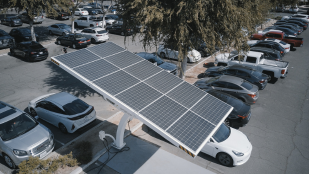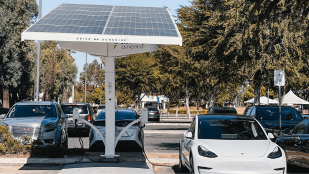Overview
Electric Vehicle (EV) infrastructure refers to the network of charging stations, power supply systems, and other supporting facilities necessary to enable the adoption and use of electric vehicles. As electric vehicles become more popular, the development of a robust EV infrastructure is crucial to support their widespread adoption and ensure their efficient and convenient operation.

KEY COMPONENTS OF EV INFRASTRUCTURE
THE ADVANTAGES OF EV INFRASTRUCTURE
The development and implementation of Electric Vehicle (EV) infrastructure offer numerous advantages that contribute to the growth and adoption of electric mobility. Some of the key advantages of EV infrastructure are
Facilitates Widespread Adoption of EVs
A well - established EV infrastructure, including charging stations, networks, and other facilities, makes it easier for consumers to switch to electric vehicles by addressing range anxiety and ensuring convenient charging options.
Reduces Carbon Emissions
EVs produce zero tailpipe emissions, and when powered by renewable energy sources, they significantly reduce greenhouse gas emissions, helping combat climate change and improve air quality.
Energy Security and Independence
EV infrastructure can promote the use of domestic renewable energy sources, reducing dependence on imported fossil fuels and enhancing energy security.
Cost Savings
Electric vehicles have lower operating and maintenance costs compared to traditional internal combustion engine vehicles.Access to affordable charging options further enhances cost savings for EV owners.
Incentives for Sustainable Practices
The implementation of EV infrastructure often comes with incentives and rebates from governments and utilities to encourage the adoption of electric vehicles, making them more attractive to consumers.
Economic Growth and Job Creation
The expansion of EV infrastructure leads to new investment opportunities and job creation in areas such as manufacturing, installation, maintenance, and technology development.
Smart Grid Integration
EV infrastructure can be integrated with smart grid technologies, allowing for demand management, load balancing, and optimization of electricity distribution.
Public Health Benefits
The reduction of air pollutants from tailpipe emissions contributes to improved public health outcomes by reducing respiratory and cardiovascular diseases associated with air pollution.
Reduced Noise Pollution
Electric vehicles are quieter than conventional vehicles, leading to reduced noise pollution in urban areas, creating a more peaceful environment.
Innovative Technological Development
Advancements in EV infrastructure and related technologies drive innovation and the development of cutting - edge solutions in the transportation and energy sectors.
Improved Urban Planning
EV infrastructure planning can contribute to more sustainable urban development by promoting cleaner transportation options and reducing the need for traditional fuel infrastructure.







